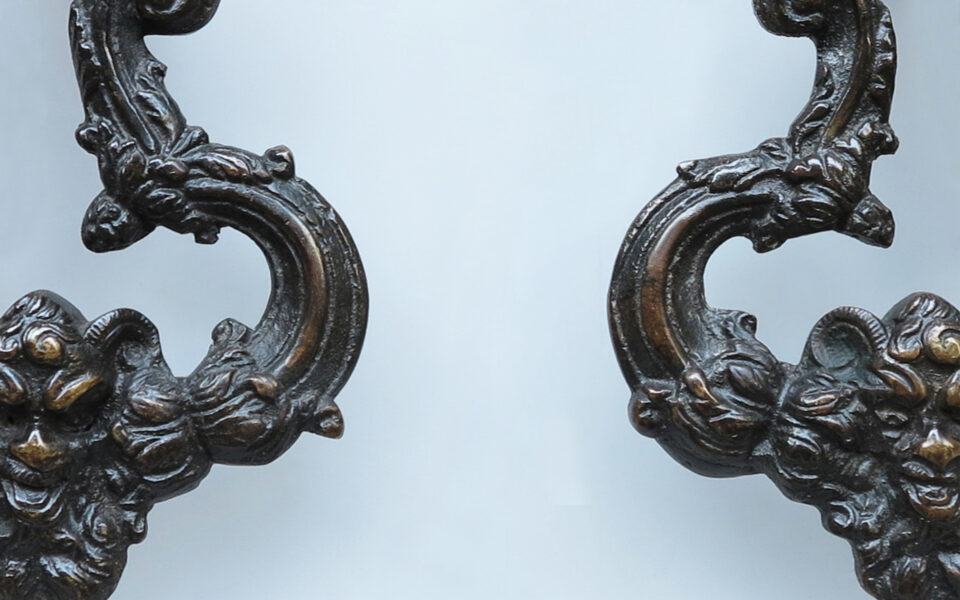
A nice pair of Emilian Bronze Doorknockers
The quality of this nice pair of bronze doorknockers with dark patina is mainly due to their formal richness: a lyre-shaped body with arms adorned by foliages and vegetal scrolls among which – in the centre and in correspondence of the knocking element – appears the mask of a satyr with goat horns.
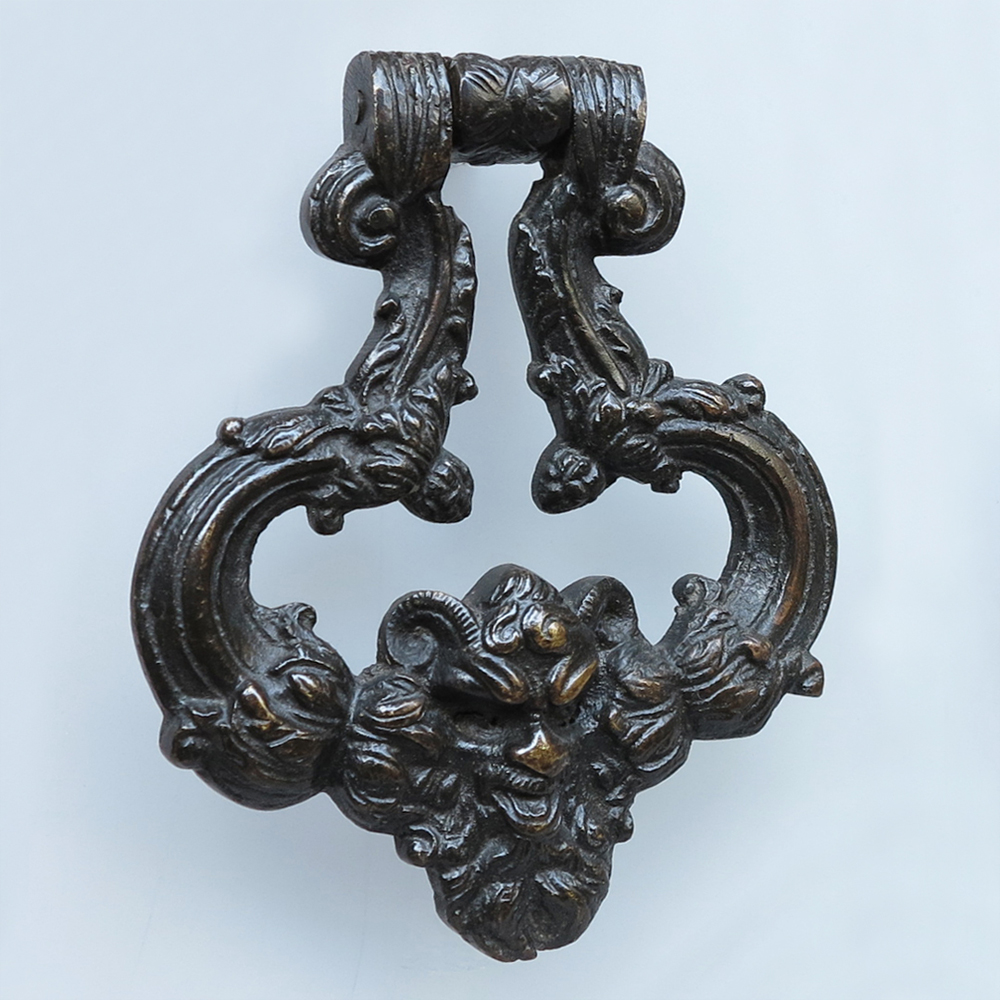
Leonine and grotesque mascarons are typical and recurrent elements in doorknockers and other small Renaissance bronzes: on one hand they recall the ancient world and on the other they certainly have an apotropaic function.
Among the best witnesses of the fortune of this kind of image we can remember an early work by Michelangelo: the iconic marble Head of a Faun, carved around 1489 but lost in 1944 and today known through the descriptions by Condivi and Vasari, and thanks to some plaster casts.
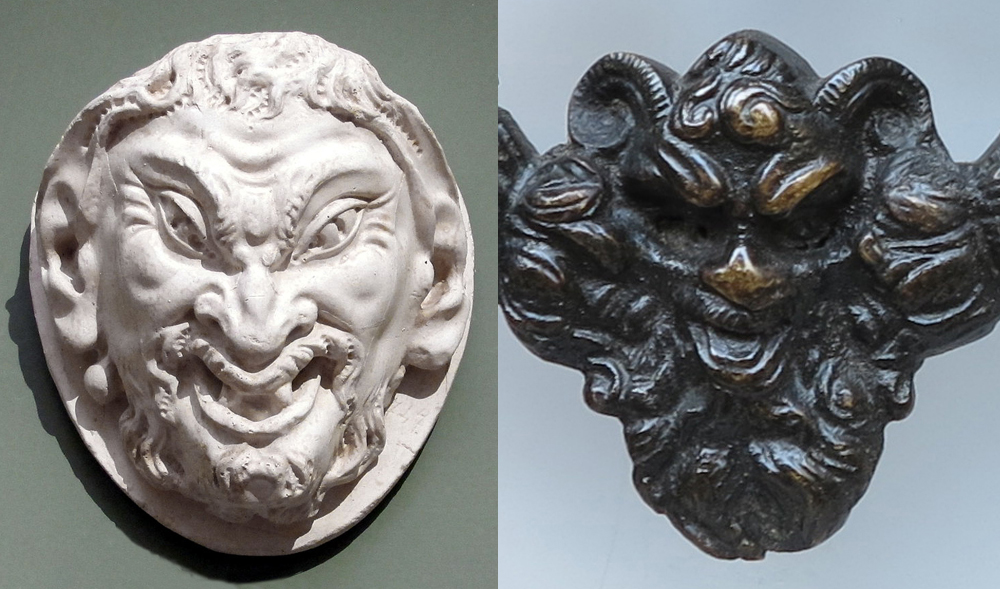 On the left : Michelangelo Buonarroti, Head of a Faun, c. 1489 (lost in 1944).
On the left : Michelangelo Buonarroti, Head of a Faun, c. 1489 (lost in 1944).
Michelangelo’s head, like that of our doorknockers, is bearded and laughing, showing large eyebrows, a “broken” nose and an open mouth with protruding teeth and tongue. It is a powerful and fascinating representation, which can also be found on cameos, handles, doorknockers and other Renaissance objects: an allusion to the most wild and instinctive aspect of mankind, as it was already celebrated in the ancient and pagan world.
Another doorknocker, nearly identical to those presented here and certainly made in the same workshop, is housed at Museo Stefano Bardini in Florence (Nesi-Rago 2009, p. 168). Two other quite similar ones were still in place in 1903 on a door of a house in Reggio Emilia (Balletti 1903, p. 121-122).
Look at a stunning pair of German doorknockers here; and discover an unrivalled spanish one here.
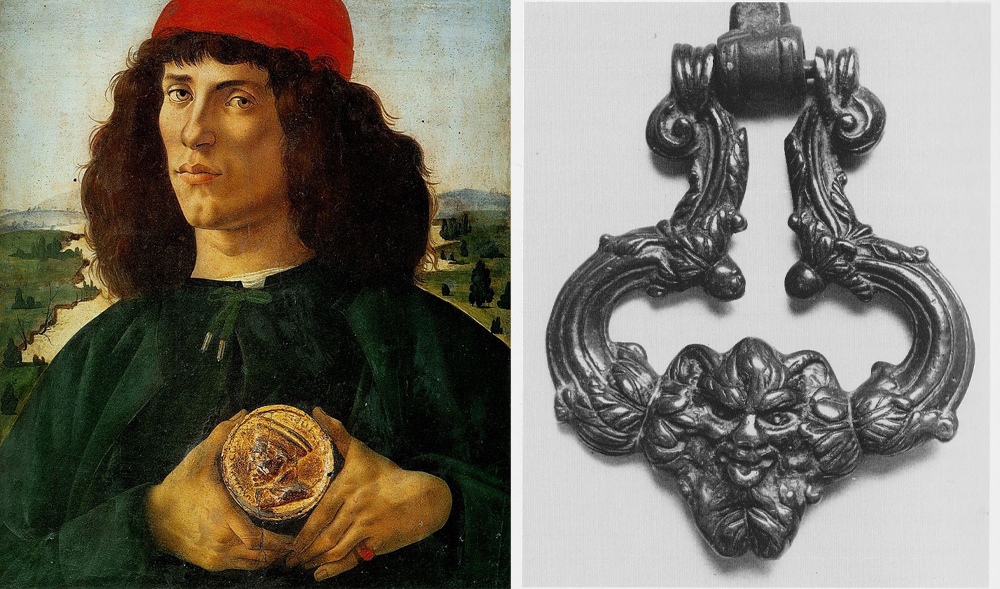 On the left: Sandro Botticelli, Portrait of a Man with a Medal of Cosimo the Elder, c. 1474-1475. Florence, Uffizi Gallery. | On the right: Emilia workshop, Doorknocker, late 16th century. Florence, Museo Bardini.
On the left: Sandro Botticelli, Portrait of a Man with a Medal of Cosimo the Elder, c. 1474-1475. Florence, Uffizi Gallery. | On the right: Emilia workshop, Doorknocker, late 16th century. Florence, Museo Bardini.
The collection of small bronze objects from the Ancient World , mainly focused on medals, starts in the late Middle Ages and leads, during the Renaissance – in Veneto, especially in Padua-, to a ‘rebirth’ of small bronzes, often made by excellent artists such as Pisanello and Donatello and inspired by the ancient models. The production of these small bronzes quickly became a specific genre – addressed to a cultivated élite of refined amateurs – rapidly spreading in Emilia and in Tuscany.
Considered as autonomous works of art, Renaissance small bronzes will be then very appreciated between the end of the 19th and the beginning of the 20th century, and sought after by the greatest and best European collectors.
As the great 14th century poet Francesco Petrarca already noticed, the special charm of small antique objects derives from the fact that they are manageable sculptures, providing a pleasure that is certainly visual but also substantially tactile; the same aspect is emphasized, centuries later, by Galileo, and again in 1961, the celebrated antique dealer Luigi Bellini wrote: “Bronzes are like pearls, […] because you feel a physical pleasure in caressing them […], you would never stop”.
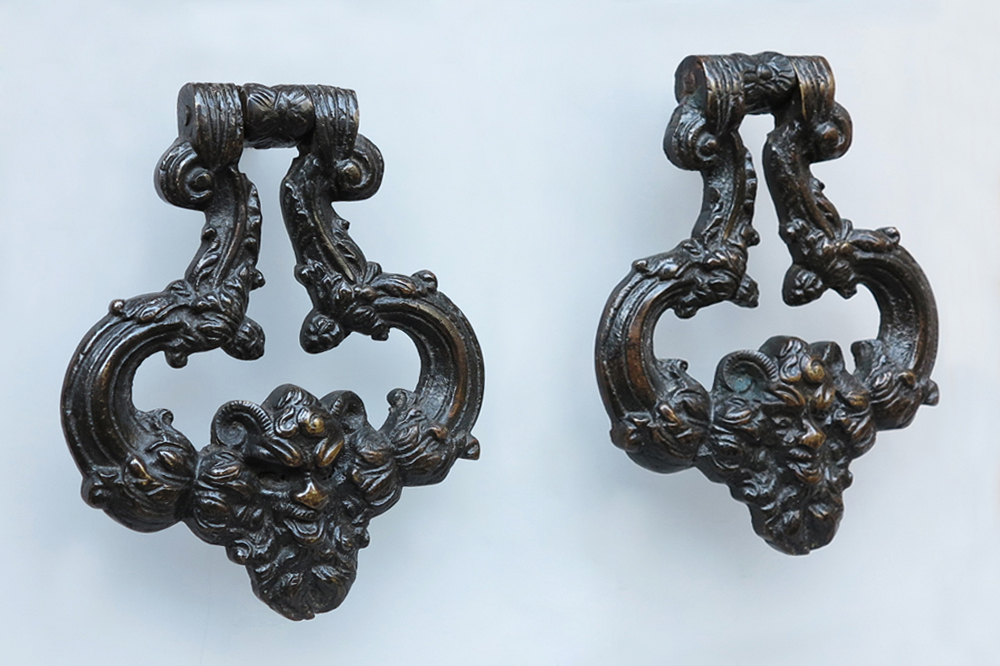
PAIR OF DOORKNOCKERS
Italy (Emilia)
Second half 16th century
Bronze
H cm 16
Bibliography: La camera delle meraviglie, exhibition cat., Galleria Mazzoleni, Milan 1985, n.20; Museum, exhibition cat., Galleria Lorenzelli, Bergamo 1994, p. 244.
References: A. Balletti, Gli ultimi battenti in bronzo a Reggio dell’Emilia, in “Rassegna d’Arte”, 1903, III, p. 121-122; Museo Stefano Bardini. I bronzetti e gli oggetti d’uso in bronzo, ed. by A. Nesi, cat. by T. Rago, Florence 2009, p. 168, cat. 65.
© 2013 – 2023 cesatiecesati.com | Please do not reproduce without our expressed written consent
Alessandro Cesati, Via San Giovanni sul Muro, 3 – 20121 Milano – P.IVA: IT06833070151